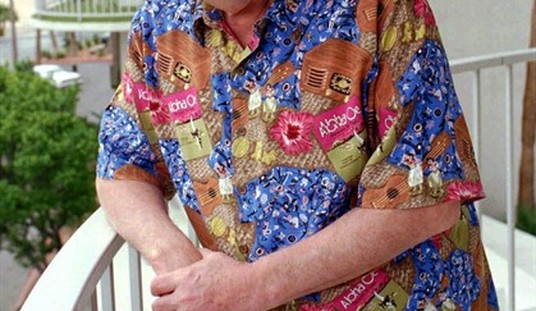Before getting to the documentary, the news headline of the day so far is that the Benghazi sacking may have been part of a larger campaign to drive the U.S. out of eastern Libya. Fox reports on that, building its case on the word of two military sources and the hundreds of attacks that led up to the deadly 9-11-12 assault.
The Sept. 11 attack was preceded by hundreds of security incidents in Libya over the past year. Several of them involved western targets in the Benghazi area, which could indicate a pattern.
The attack on the U.S. Consulate in June 6 with an improvised explosive device, planted in the ledge of the perimeter wall, was described as a probing attack to measure the response. This incident, coupled with attacks on the International Red Cross and an RPG attack on the British ambassador’s convoy — after which the British withdrew — suggest a pattern to drive western influence from the region.
Further, it fits with a broader effort by the Al Qaeda affiliate and the militant group Ansar al-Sharia to establish an Islamic state in eastern Libya. Libyan authorities are identifying Ansar al-Sharia leader Ahmed Abu Khattala as the commander of the attack, though Fox News was told the U.S. intelligence community is not going quite that far. Rather, Khattala is on the short list of suspects and was described as “one to watch.”
As noted earlier, the New York Times found him hanging out in the local posh hotel sipping a hipster drink. The idea that the 9-11-12 attack was part of a larger campaign squares up well with that August 2012 Library of Congress report in which Ansar al Sharia is described as taking a leading role in the attempt to Islamicize post-Gaddafi Libya. Drive the west out, humiliate America, be the strong horse — that seems to be the Islamist path to power in Libya. They were succeeding too. Lt. Col. Andrew Wood testified that by the time of the Benghazi attack, the American flag was the last western one flying in the city. The British and the Red Cross had already been driven out by attacks. The U.S. consulate, as insecure as it was, became a sort of forward outpost and weapons depot for the British mission. The weapons that the prime suspect in the attack claims to have found inside the compound may well have been the stored British arms. They’re surely now in the hands of the Islamist militias, along with who knows what other material and information they were able to scoop up the night of the attack and in the three weeks that followed between that night and the FBI’s arrival.
Now, to the documentary, which was produced by ConservARTive.com. It shows several things that I don’t think have been seen elsewhere. One of those is what may be Ambassador Christopher Stevens’ final interview. It was taped sometime in June 2012, apparently after the probing attack on the wall of the consulate. That attack was mounted to test the U.S. response. The U.S. evidently did not respond at all. The Islamists probably expected the U.S. to beef up security, but when no new security arrived, they probably took that as a green light to proceed.
The second piece of news in the documentary is footage of the Islamist show of force in Benghazi in June. That show of force was described in the August report, but footage has been scarce. You’ll see in the 10-minute documentary that it was your typical Islamist militia parade, with masked fighters manning guns mounted in pick-up trucks or waving AKs out the windows. Place yourself in the streets as an average Libyan. You’re happy that Gaddafi is gone but the country is in chaos. You mostly want to be left alone to live your life, but the west is evacuating the place and here’s a multi-battalion strength show of force parading down the streets in your town. They’re honking, waving guns, and the rest, while the westerners are taking down their flags and going home. Who appears to be the strong horse in your neighborhood?
The third new finding in the documentary is the explicit threat to attack the consulate to retaliate for the U.S. killing of a local al-Qaeda big shot. That comes at about the 3:53 mark. The threat aired in June. Its title: “Take U.S. Consulate in Retaliation for Abu Yaya Al-Libbi.”
As the security situation worsened, Ambassador Stevens puts up a brave face as you’ll see in the documentary, talking about education and health care to the press in the newly free Libya, while downplaying the increasing security threat and appealing to the average Libyan’s desire to be free. Behind the scenes, he and his security officers repeatedly asked the State Department for more help. We don’t know if sending more security to Benghazi would have kept him alive. We do know that the terrorists probed security with lower scale attacks in the summer and got no American response, and we do know what they did with that intelligence.
We also know what President Obama was doing with his intelligence in the weeks leading up to the attacks: He was paying little or no attention to it. He had it delivered to his iPad and…that’s all we know. He had attended fewer than half of his Presidential Daily Briefings in 2012 prior to the Benghazi and Cairo attacks.









Join the conversation as a VIP Member